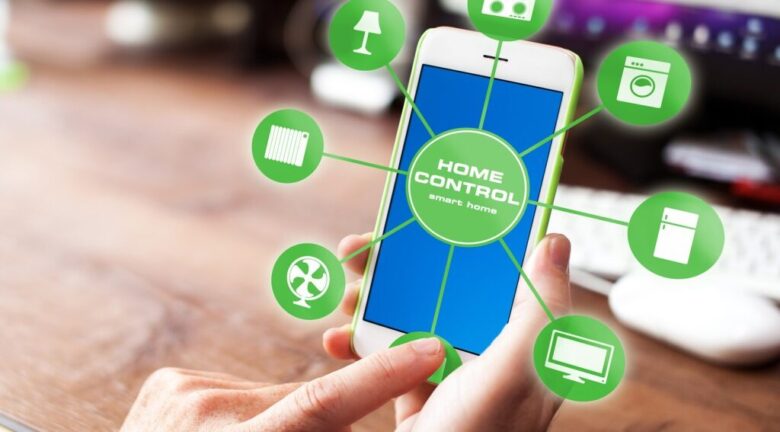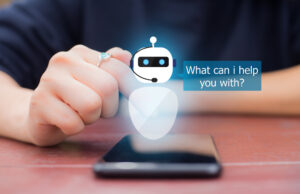When people hear the word “automation,” they often think of robots that can do anything, complex systems, or advanced smart homes. But in reality, automation has long been a part of our lives, often without us even realizing it. Automation makes our lives easier, saves time, and provides convenience in many areas, from simple appliances to advanced digital assistants. Understanding the functioning of automation in our daily lives enhances our comprehension of the integration of technology into our lives and homes.
Common Applications of Washing Machines
Washing machines are one of the most common and oldest examples of home automation. Long before smart appliances became commonplace, washing machines simplified manual laundry. Once you load your clothes, add detergent, and select the appropriate settings, the washing machine takes over. It loads, spins, rinses, and in some cases even dries. This method is a perfect example of automation, as the same actions are repeated over and over again with little to no human intervention.
Timer-Based Appliances and Coffee Makers
The smell of freshly brewed coffee is a familiar sight in many homes in the morning. Another simple example of automation is a programmable coffee maker. Set the timer the night before so your coffee is ready when you wake up. This saves time, ensures everything runs according to schedule, and means you don’t have to manually brew coffee while half asleep. A kettle with an automatic shut-off function is another seemingly insignificant but highly effective example of automation, making daily tasks easier and safer.
Thermostats and Climate Control Systems
Heating and cooling systems in the home are increasingly being automated. Before smart thermostats became commonplace, you could select a temperature with a standard thermostat, and the device would automatically adjust its heating or cooling mode to maintain that temperature. Today’s smart thermostats can learn your behavior, adjust based on the time of day, and even respond to your smartphone’s location. The system is automated, so you don’t have to turn it on or off.
Thermostats and Refrigerators
Another example of automation that people rarely think about is the refrigerator. It constantly monitors and regulates the temperature to keep food fresh. Many refrigerators have an automatic defrost function, which is also a form of automation. This feature means you don’t have to clean it manually as often. Smart features are standard on new refrigerators these days, but basic automation has been around for decades and quietly keeps food fresh without constant monitoring.
Dishwashers: Kitchen Aids
Dishwashers are another example of home automation. You don’t have to wash every dish manually. Simply place the dishes in the dishwasher, add detergent, and select a wash cycle. The dishwasher automatically controls the water level, heat, wash, rinse, and dry. This frees you up to do other things and ensures consistent cleaning results. Like a washing machine, a dishwasher performs the tedious tasks repeatedly, making life at home easier.
Lighting and Motion Detection Systems
More and more homes are equipped with automated lighting systems. For example, the lights turn on when you enter a room and off when you leave. These systems not only simplify operation but also save energy. Smart lights offer even more automation, allowing you to program lighting to turn on and off. This way, your home always has the right ambiance without having to constantly adjust settings.
Smart Devices and Voice Assistants
Alexa, Google Assistant, and Siri are all examples of modern automation. You can control lights, play music, set reminders, and even adjust the temperature with your voice. These assistants connect to various smart devices in your home and automate many simple tasks. The ability to work hands-free demonstrates how automation has evolved from a mechanical task to digital intelligence integrated into our daily lives.
Robotic Vacuums and Cleaning Tools
Robot vacuums are becoming increasingly popular because they can automate almost all everyday household tasks. You can program your vacuum to clean your floors automatically with the push of a button or on a set schedule. Some vacuums even map your home and return to their charging station. This automation saves time and effort and demonstrates how smart technology can replace manual work.
Monitoring and Security Systems
Automation is also a crucial component of home security systems. These technologies, from cameras that activate when they detect motion to door locks that unlock automatically, keep your home safe at all times. For example, when you lock your smart door, it can send a message to your phone or automatically lock at a specific time. You don’t need to constantly monitor automated cameras because they automatically record activity. These technologies give people a sense of security and emphasize how automation can make life safer.
Kitchen Appliances Beyond Coffee Makers
Automated appliances are everywhere in the kitchen. Microwaves with preset cooking settings automatically calculate cooking times. When the rice is done, the rice cooker switches to keep-warm mode, preventing burning or over-toasting. And when the bread is perfectly browned, the toaster automatically pops open. These small automations may seem mundane, but they are crucial for making everyday cooking faster, safer, and more reliable.
The Future of Home Automation
Today, many automated devices are part of everyday life, but automation will make them even more practical in the future. Homes are becoming increasingly intelligent because devices and systems can now work together on centralized platforms. Automation connects everything, instead of people having to operate each device individually. This allows homes to respond more quickly to people’s needs and desires. In the future, refrigerators will be able to automatically order groceries, and kitchens will be able to prepare meals with little to no human intervention.
Conclusion
Automation is not just a futuristic concept; it has already become a fundamental and practical part of daily life. Automation works silently and makes life easier, saves time, and increases comfort. Examples include washing machines, dishwashers, smart thermostats, and robot vacuums. These common examples demonstrate that technology has constantly strived to make life easier, and home automation is just the next step in this direction. Understanding the appliances we already have can help us prepare for the smarter, more connected homes of the future.
FAQs
1. What is the most basic example of home automation?
A washing machine is one of the most common and user-friendly automated appliances in most homes.
2. Do I need smart appliances to automate my home?
No. Even simple appliances like coffee makers, refrigerators, and dishwashers with timers are considered automated.
3. How can home automation help you save energy?
Programmable thermostats and lights that turn on and off as needed can help reduce waste and save energy.
4. Is it expensive to automate your home?
Not always. Many typical appliances with built-in automation are affordable and have been a part of homes for a long time.
5. Will automation take over all household tasks?
Automation will still perform some repetitive and time-consuming tasks, but it still requires people to make decisions, be creative, and make choices.




